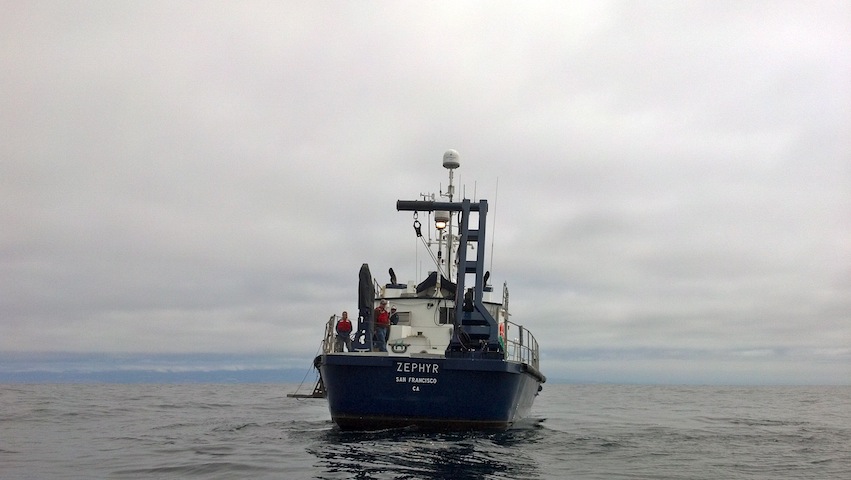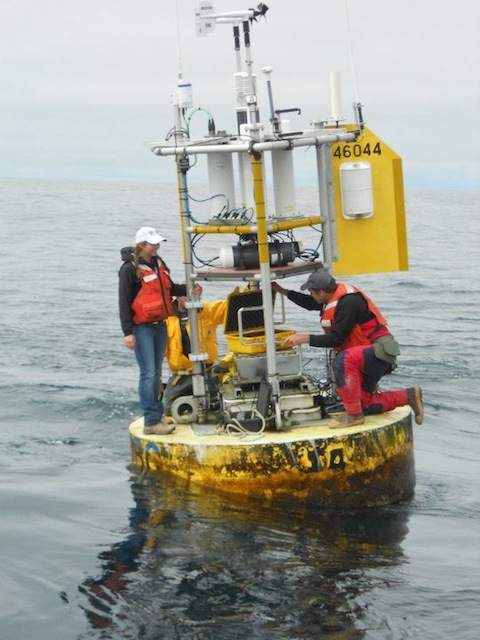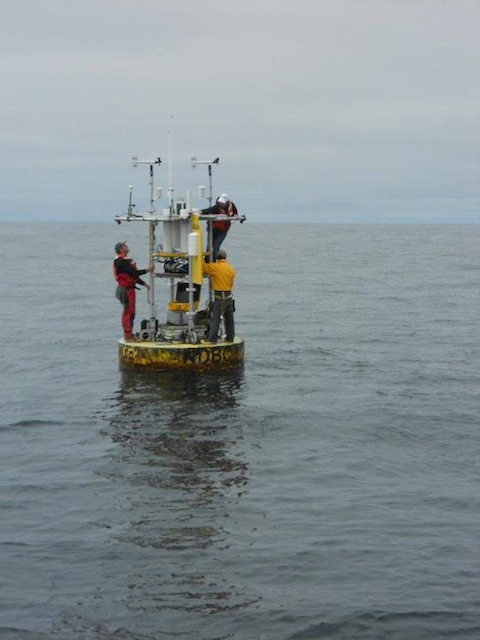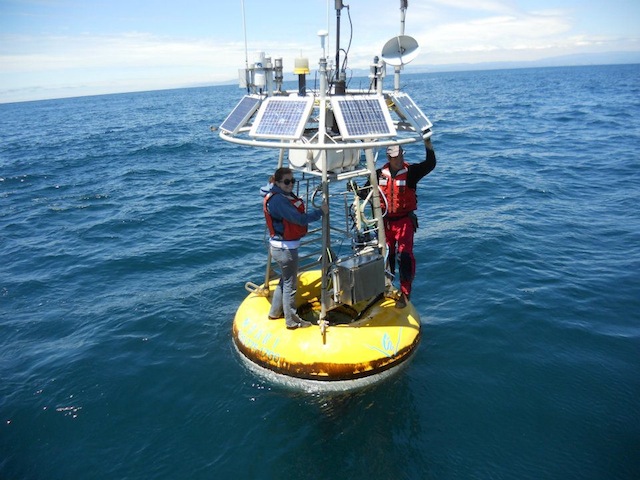By Diane Wyse, Physical Oceanography Lab
Among the coolest aspects of interning at the Monterey Bay Aquarium Research Institute (MBARI) are all of the opportunities for new and exciting experiences in marine science and engineering. On a beautiful Moss Landing summer day, fellow intern Samantha Peterson and I enjoyed one of those opportunities on a day cruise aboard MBARI’s R/V Zephyr. We steamed out of Moss Landing Harbor early in the morning, and after two hours of getting our sea legs and munching on snacks (to avoid sea sickness, for sure), we arrived at our first of two stops for the day. The cruise plan included a visit to the M2 mooring, a buoy deployed and maintained by MBARI scientists and engineers in partnership with the National Data Buoy Center (ID 46044), to download acoustic Doppler current profiler (ADCP) data and perform routine maintenance.

The whole process of visiting and maintaining a mooring was really exciting to experience, especially as a student of physical oceanography. I got a kick out of the adventure inherent in maintaining oceanographic and meteorological instruments bobbing at the surface, moored 1000+ meters below on the seafloor. As I stood at the back of the Zephyr taking in the experience- the albatrosses gracefully landing to investigate our activities, the sea lion curiously poking it’s head up around the buoy, the scientists and technicians climbing onto the buoy from the side of the ship- I wondered what sort of training or security clearance one has the endure to work on the buoy. After pondering this aloud to my fellow intern, I inquired with the ship operator. His job was to carefully back the boat up to the buoy to transfer people and equipment, then to maintain a safe distance from the buoy while the technicians were working on it. As it turns out, it was surprisingly simple; I had to confirm with just about everyone on that day cruise that I am not sensitive to seasickness before getting the go-ahead to disembark the trusty Zephry and climb (well, pounce, really) aboard M2. I could see immediately what everyone was driving at once I was aboard the mooring. Because the platform is only about 10 ft in diameter, it is much easier to get tossed about with the swell. You feel much more in touch with the ocean on a smaller vessel. While ocean observers Mike Kelley and Jared Figurski downloaded the ADCP data, I climbed to the upper level to investigate the meteorological instruments. With my finely tuned CSI skills, I observed the evidence of seabird visitors on the solar panels and offered to clean off the droppings, you know, in the name of science. Surprisingly, they were more than happy to oblige that request, and I grabbed a cloth with seawater and scrubbed those panels squeaky clean.


With the ACDP data downloaded and the panels operating in a more optimal state, we boarded the Zephry for the trip to M1, closer to shore. The sun came out and the wind picked up in time for Sam to catch a ride aboard donut-shaped M1 while the observers cleaned gooseneck barnacles off the submerged portion of the mooring.

Altogether it was a really cool chance to see oceanography in action, and as with many things in science, it brought about even more questions. The one that stands out most now is how does one go about diving with the ocean observers to help maintain the moorings?

